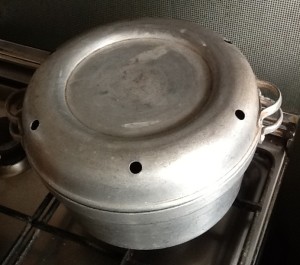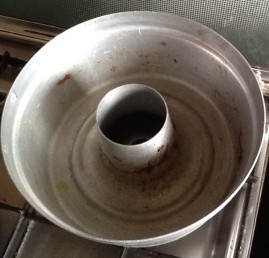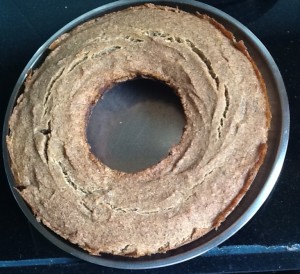A friend of mine asked me a pertinent question – when this project and the blog is titled ‘Solkadhi’ how come I haven’t posted its recipe? Point! So here goes…
Solkadhi is a preparation that is quite popular – and made even more so by the many restaurants who specialise in Coastal cuisine from western India. Naturally, many versions of Solkadhi are available in the market. However, as is the case with most dishes across cuisines, the authentic recipes made at home are indeed quite different from the versions available in restaurants. And the purists tend to turn up their noses at the ‘commercial varieties’ 😉
Recipes for Solkadhi also tend to subtly vary across families. I have recorded two recipes made in my family – plus a ‘shortcut’ one. And then there is a ‘cousin’ of the Solkadhi, called ‘Tiwal’ – which is made without coconut. Am going to note that down too – in a separate post.
About Solkadhi
Solkadhi is made from Kokum or Aamsol – a fruit that is grown in the region. I am not going to digress into details about kokum itself. Instead, here are a couple of interesting posts I came across on the topic – you may want to check them out: ‘Kokum – the kool king‘ and ‘The mystique of kokum‘
Solkadhi is like a ‘staple’ dish that used to be on the daily menu of most homes in our part of the world. It is like what Curd or Rasam or buttermilk is to many of my friends from other parts of the country. In fact, in our home, over the last few years, my parents have reverted to having Solkadhi with every meal. I was asking my dad what is the ‘big deal’ about Solkadhi. Being the healthcare expert that he is, he explained that it contains ‘fungal diastase‘ – which helps with 1st stage digestion of carbohydrates in the body. It helps reduce the ‘bulk’ in the stomach – which is why it is considered a ‘must’ with heavy food rich in carbs. Given that Konkan is basically a rice & fish eating region, it explains why this must have evolved. Besides, kokum itself is supposed to be an excellent antidote for acidity.
Recipe #1:
Ingredients
- Fresh Coconut – grated, 1 cup
- Aamsol or Kokum – 7 to 9
- Green Chillies – 2, medium length, cut into 2-3 pieces
- Ginger – 1/2 inch, peeled and diced into 4-5 pieces
- Asafoetida (Heeng) – qtr tsp
- Salt to taste
Procedure:
Soak the kokum in about 3/4th cup water adding the Heeng and Salt. Keep aside for a couple of hours.
Now comes the critical grinding-of-the-coconut part. This used to be done on a stone grinder (called ‘Pata Varvanta’ in Marathi) in the pre-mixer days – I recollect helping my mom do this occasionally in my childhood. While most folks have switched to mixer-grinders, those who have eaten food containing spices & masalas ground on stone grinders insist that the same flavours don’t emerge when using a mixer. The fundamental difference is that in a mixer, the ingredients get “finely chopped” – while on a stone grinder, they get ground and pressed together while getting broken down.
Anyways, so in our ‘modern day’ methodology, this is how you proceed : grind the coconut, ginger and green chillies with 3/4th cup water in the mixer. When it grinds to a decent paste, squeeze the ‘milk’ out of the paste and keep aside. Add another 3/4th cup of water to the dry remains and run the mixer again for a minute or so. Again extract the milk – adding to the original extract. Repeat a couple of more times – till basically all the ‘milk’ gets extracted from the coconut and you start extracting only clear water.
Add the extracted ‘milk’ to the pre-soaked kokum above and blend. Keep aside for a couple of hours – it is important to let the Solkadhi ‘be’ for at least a couple of hours before you consume it. And remember to stir the Kadhi everytime you serve it – the coconut extract tends to rise to the top when the kadhi is left untouched for a bit!
And BTW, the kokum is supposed to be thrown away after consuming the kadhi – don’t eat them by mistake 🙂 (It happened with someone I know – so I just thought I should mention it!)
Solkadhi is eaten traditionally with rice – “kadhi-bhaat’ is usually the last course in a meal. While it certainly goes well with fish and meat dishes, it is also lovely to have with your ordinary bhaaji or sabji.
A few important points:
– Although Solkadhi is commonly ‘positioned’ as a drink (and hence is served a tad sweetened), original solkadhi is meant to be eaten with rice.
– A lot of commercial establishments use something called ‘Kokum Aagal’ – a Kokum juice extract that is available in the market- instead of soaked kokum to make kadhi. When in a pinch, you could probably use the “aagal” I guess. The only issue is that most commercial products are sold with sugar added to the Kokum Aagal (so that it can double up as a base for Kokum juice) – and that tends to completely spoil the taste of the Solkadhi.
Recipe #2:
The difference is only in the ingredients used to spice the Kadhi. So the combination of ingredients in this version of the kadhi are:
- Fresh Coconut – grated, 1 cup
- Aamsol or Kokum – 7 to 9
- Garlic – 5-6 big pods, peeled. These should be ‘crushed’ (use a pestle or a stone) before use. In fact, always crush garlic before using in any recipe as the crushing helps release the beneficiary oils that garlic is known for
- Black Peppercorns – 7 to 8
- Asafoetida (Heeng) – qtr tsp
- Salt to taste
The procedure is exactly the same as given in Recipe #1. Instead of grinding the coconut with chillies and ginger, grind it with the garlic and black peppercorns.
BTW, this garlic-black pepper version of the solkadhi is particularly given to people recuperating from an illness or to young mothers. It also goes very well with a non-veg meal.
Recipe #3 – the Shortcut method:
Since one is perpetually short of time these days, here is a short-cut version of the Solkadhi. Again, purists frown on this version…but when one doesn’t have the luxury of time or household help, atleast one can still enjoy Solkadhi.
The short cut version basically uses coconut milk instead of grated coconut.
Ingredients:
- Aamsol or Kokum – 7 to 9
- Green Chillies – 2, medium length, cut into 2-3 pieces
- Ginger – 1/2 inch, peeled and diced into 4-5 pieces
- Asafoetida (Heeng) – qtr tsp
- Coconut Milk – 1/2 cup
- Salt to taste
Soak the kokum in 3/4th cup water with Heeng & Salt plus the Chillies and Ginger for a couple of hours. You can even use ginger & chilly paste. Add the coconut milk after the kokum is soaked. Keep aside for at least an hour or so before consuming.
Enjoy! 🙂



